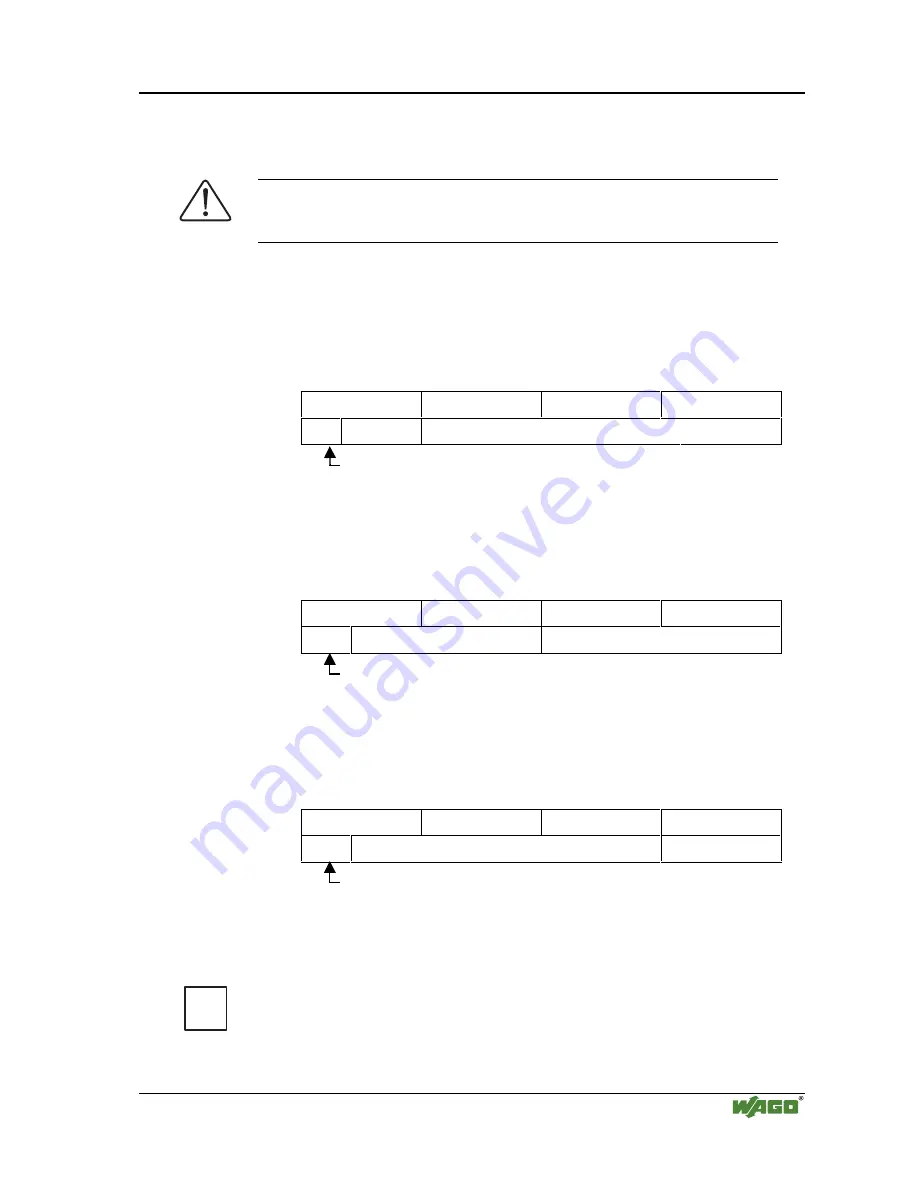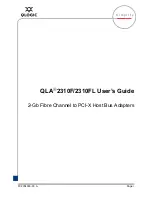
ETHERNET • 273
Network communication
Modular I/O System
ETHERNET TCP/IP
IP addresses
To allow communication over the network each fieldbus node requires a 32 bit
Internet address (IP address).
Attention
Internet addresses have to be unique throughout the entire interconnected
networks.
As shown below there are various address classes with net identification (net
ID) and subscriber identification (subscriber ID) of varying lengths. The net ID
defines the network in which the subscriber is located. The subscriber ID
identifies a particular subscriber within this network.
Networks are divided into various network classes for addressing purposes:
•
Class A: (Net-ID: Byte1, Host-ID: Byte2 - Byte4)
z. B:
101 . 16 . 232 . 22
01100101
00010000
11101000
00010110
0
Net-ID
Host-ID
The highest bit in Class A networks is always 0.
I.e. the highest byte can be in a range of
0 0000000 to 0 1111111.
Therefore, the address range of a Class A network in the first
byte is always between 0 and 127.
•
Class B: (Net-ID: Byte1 - Byte2, Host-ID: Byte3 - Byte4)
z. B:
181 . 16 . 232 . 22
10110101
00010000
11101000
00010110
10
Net-ID
Host-ID
The highest bits in Class B networks are always 10.
I.e. the highest byte can be in a range of
10 000000 to 10 111111.
Therefore, the address range of Class B networks in the first
byte is always between 128 and 191.
•
Class C: (Net-ID: Byte1 - Byte3, Host-ID: Byte4)
z. B:
201 . 16 . 232 . 22
11000101
00010000
11101000
00010110
110
Net-ID
Host-ID
The highest bits in Class C networks are always 110.
I.e. the highest byte can be in a range of
110 00000 to 110 11111.
Therefore, the address range of Class C networks in the first
byte is always between 192 and 223.
Additional network classes (D, E) are only used for special tasks.
i
More information
A more detailed description of these principles is found on the Internet under
http://www.WuT.de/us_printmed.html (W&T, Manual TCP/IP-ETHERNET for
Beginners).
















































